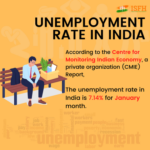Poverty estimates of India are rapidly increasing, and two states, Bihar and Uttar Pradesh making the poverty in India extremely high. From 2004 to 2009, the poverty drop was only a 7.3% reduction, and they maintained such a lower poverty reduction. It’s not a big reduction as the national planning commission aims to reduce poverty by at least 2% percent each year. Between 2004 and 2009, we must reduce poverty by 10% at least. Though we need to accept that between 2003 and 2004, India’s poverty is not much reduced compared to the current stats, we can see a visible difference from previous numbers.
What does this reduction reflect?
We can’t directly say that poverty reduces with the growth rate of the country. As poverty and growth rate are not directly proportional in many cases, as the growth may happen in particular sectors and the below the poverty line, people stay at the same pace or stay below. Poverty is reduced up to one-third in terms of the public distribution system, higher wages, etc. Though higher wages are proportional to the growth rate, they still can’t help many poor people. They don’t have access to education, nutritious food, quality health care, etc.
90% of the poor in India don’t have a needful healthcare policy to protect their lives in times of need. Their children can’t access quality education, and this will extend the poverty cycle. Most of the poor suffer from increased child mortality, child stunting, and child wastage, and increased risks for pregnant women. Especially UP and Bihar are facing severe challenges by owning more number of poor people.
Bihar and Uttar Pradesh Poverty
Both UP and Bihar have recorded the highest poverty reduction states in India. These two states don’t have PDS reform, and the growth rate didn’t move up. There are mysteries observed in these states where rural poverty is significantly less than compared to urban poverty. It is imposing like a non-growth story showing growth rate increase. Alongside, rural growth is relatively proportional to agricultural development concerning manufacturing and acceleration. Poverty is more decreased in the states with more number of urban cities, for example, Maharashtra. Hence we can’t generalize any fact and can’t estimate on which side poverty is impacting.
We can’t unveil some mysteries wherein UP and Bihar there is a decline in poverty, and we don’t have any figures to estimate the poverty alleviation and who came out of poverty. Without understanding these estimates, we can’t accurately predict poverty reduction. Orissa is a poor state and has done commendable work to reduce poverty. Hence the poverty ratio decreased in the state. When coming to UP and Bihar, there are no such poverty reduction schemes, but they emerged from poverty, according to the stats.
UP and Bihar didn’t introduce impactful education, healthcare, hunger, and other public welfare schemes to reduce poverty. But the figures are showing different; anyhow it is good if the state’s poverty reduces. Coming to the world poverty index, India records the lowest reduction in poverty and these two states remain as the significant poor living places.
ISFH Foundation operates throughout India to reduce the poor and help them to come out of poverty by supplying healthy food, decent clothes, and offering a dream home. The organization has the dream to take part in reducing India’s Poverty. Hence it initiated Poverty Reduction Mission to save the poor and needy.











